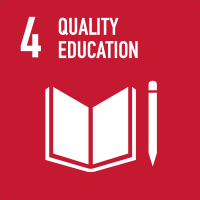Studying at the University of Verona
Here you can find information on the organisational aspects of the Programme, lecture timetables, learning activities and useful contact details for your time at the University, from enrolment to graduation.
Study Plan
This information is intended exclusively for students already enrolled in this course.If you are a new student interested in enrolling, you can find information about the course of study on the course page:
Laurea magistrale in Linguistics - Enrollment from 2025/2026The Study Plan includes all modules, teaching and learning activities that each student will need to undertake during their time at the University.
Please select your Study Plan based on your enrollment year.
1° Year
| Modules | Credits | TAF | SSD |
|---|
One module among the followingOne module between the followingOne module among the followingOne module among the following2° Year It will be activated in the A.Y. 2025/2026
| Modules | Credits | TAF | SSD |
|---|
One module among the followingOne module between the following| Modules | Credits | TAF | SSD |
|---|
One module among the followingOne module between the followingOne module among the followingOne module among the following| Modules | Credits | TAF | SSD |
|---|
One module among the followingOne module between the following| Modules | Credits | TAF | SSD |
|---|
Legend | Type of training activity (TTA)
TAF (Type of Educational Activity) All courses and activities are classified into different types of educational activities, indicated by a letter.
Italian Linguistics (2024/2025)
Teaching code
4S002858
Teacher
Coordinator
Credits
6
Language
English
Scientific Disciplinary Sector (SSD)
L-FIL-LET/12 - ITALIAN LINGUISTICS
Period
CuCi 2 A, CuCi 2 B
Courses Single
Authorized
Learning objectives
The course has the following fundamental objectives:
1) to provide a general description of the structures of Italian (phonetics, morphology, morphosyntax, syntax);
2) to provide basic information about the diachronic grammar and history of the Italian language from its origins to the present;
3) to guide students in the morphosyntactic analysis of some significant texts in a diachronic and synchronic perspective (in relation to the type and scope of use).
Prerequisites and basic notions
Advanced competences in Italian (C1-C2).
Program
The course will introduce students to the study of the structures, varieties and uses of contemporary Italian. The contemporary approach will be accompanied by in-depth studies aimed at framing the current status of Italian in a historical perspective. To introduce the theoretical topics, the tool of text analysis will be privileged, interpreted as the fundamental unit of communication in which the functions of linguistic structures are realized. The salient points of the program will be the following: - the structures of contemporary Italian (text and syntax: coherence and cohesion; features of phonetics and phonology; elements of lexical morphology) - variation and variety of Italian today and yesterday (in particular: profile of the history of the Italian language; varieties in geographical space; special languages; contemporary Italian in the social and communicative space).
Bibliography
Didactic methods
The following teaching methods will be adopted during the course: - lectures, with detailed illustration of the theoretical topics of the course - text analysis exercises (in the classroom) - optional exercises of independent reading and analysis by students (the materials will be uploaded to Moodle) - individual exercises by students on a single case study, to be agreed with the teacher in view of the exam (see below) - a seminar outside of the normal timetable, in which a scholar will be invited to illustrate a research in progress. The Moodle platform will be used as an archive for the slides and materials used in lessons; in addition, students will find here an indication of useful resources available online.
Learning assessment procedures
The exam is divided into two parts: 1. Individual written exercise, to be agreed with the teacher 2. Oral exam The exercise will consist of a linguistic analysis of a short Italian text, belonging to any genre and period (but with a preference for the contemporary age), agreed with the teacher before the exam. Students may propose texts and documents of interest to them. The oral exam aims to verify: • knowledge of the theoretical topics • acquisition of the specific terminology of the discipline • the ability to linguistically analyze the texts, also through discussion of the individual exercise. Contents and evaluation methods of the oral exam (out of thirtieths): • discussion of the exercise 10 pt. • two theoretical questions on the program 14 pt. (7 pt. each) • reading and linguistic commentary of a short text proposed by the teacher 6 pt. The exam methods are the same for attending and non-attending students.
Evaluation criteria
The oral exam aims to verify:
• knowledge of theoretical topics
• acquisition of the specific terminology of the discipline
• the ability to linguistically analyse texts, also through discussion of individual exercises.
Criteria for the composition of the final grade
Contents and methods of evaluation of the oral exam (in thirtieths):
• discussion of the exercise 10 pt.
• two theoretical questions on the program 14 pt. (7 pt. each) • reading and linguistic commentary of a short text proposed by the teacher 6 pt.
Exam language
Italiano

